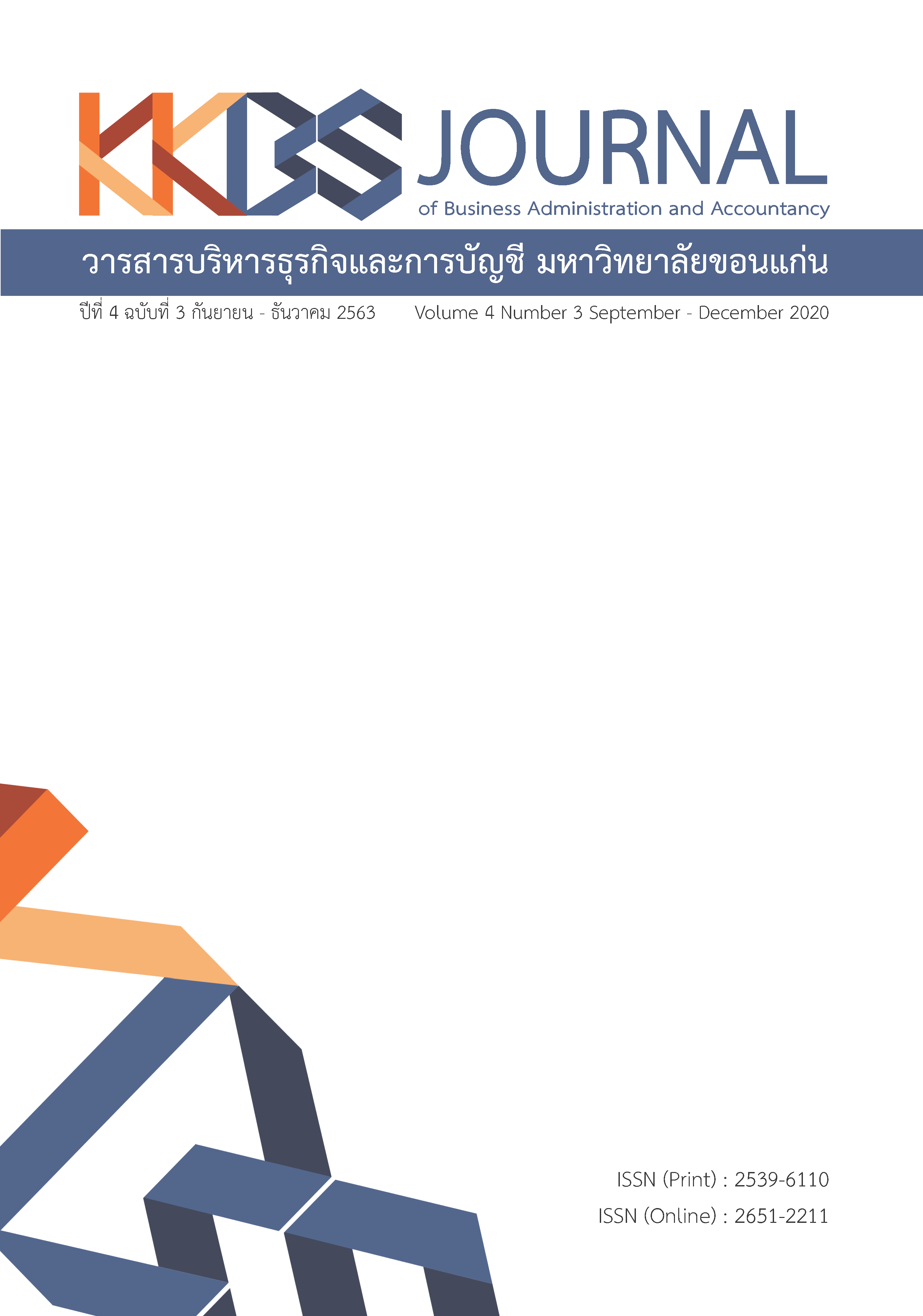The Influence of Effective Organizational Communication affects Internal Branding Creation and Organizational Effectiveness of the Petrochemical Industry in Thailand
Main Article Content
Abstract
The purpose of the research was to study the influence of effective organizational communication and internal branding creation on organizational effectiveness. Online and offline questionnaires collected data from 400 employees of the petrochemical industries using a purposive sampling method, and 70% were supervisory. From multiple regression analysis, found;
1. The effective organizational communication factors influence organizational effectiveness. 1.1) The capability of an audience, channel, clarity, content, and creditability of communication were positive, but communication context negatively influenced the organizational goal. 1.2) Capability of audience, clarity, and communication content were a positive influence on social responsibility. 1.3) Continuity, clarity, and content of communication were a positive influence on corporate culture. 1.4) Content, continuity, audience capability, and communication channel was positive on trust in the organization.
2. effective organizational communication factors influence internal branding creation. 2.1) Continuity, the audience's capability, channel and content of communication were positive on internal branding communications. 2.2) Continuity, content, channel and clarity of communication were positive on training side. 2.3) Clarity, channel, audience capability, and continuity of communication were positive on management support. 2.4) Continuity, content, clarity, and communication capability were positive, but communication's credibility was negative on internal marketing activities. 2.5) Continuity, channel, context and content of communication were positive on rewording.
3. Internal branding creation factors were a positive influence on organizational effectiveness. 3.1) Internal marketing activities, internal branding communications, management support and reward were positive on organizational goal. 3.2) Internal marketing activities, management support, internal branding communications were positive on social responsibility. 3.3) Internal marketing activities, internal branding communication, management support and training were positive on corporate culture. 3.4) Internal branding communications, internal marketing activities, training and reward were positive on trust in the organization at the statistical significance level 0.05
Article Details
The articles published in the journals are the authors' opinions, not the opinion of the editorial team or administrative staff. The articles published is copyright of the Journal of Business Administration and Accounting, Khon Kaen University.
References
Boongthong, T. (2012). The relationship between efficiency of internal organization communication and teamwork effectiveness of travel agencies in Bangkok metropolitan region. Mahasarakham: Mahasarakham
University. (In Thai)
Changchutoe, N. (2016). Factor analysis of corporate social responsibility for brand communications. Journal of Behavioral Science for Development, 8(2), 93-114. (In Thai)
Dechawatanapaisal, D. (2013). Internal branding: the new challenge of human resource management. Journal of HR Inteligence, 8(2), 86-94. (In Thai)
Department of Industrial Works. (2018). Statistics of worker in Petrochemical Industry. Retrieved November 10, 2018 from https://www.diw.go.th (In Thai)
Drucker, P. (2003). The Essential Drucker. (Chuenchit Changchenkit, Trans.). Bangkok: A. R. Business Press.
Eastern Economic Corridor (EEC) Office. (2018). EEC development plan. Retrieved October 20, 2018 from https://www.eeco.or.th (In Thai)
Jaichansukkit, P. (2009). Internal branding: a good brand must come from within the organization. Retrieved November 20, 2018 from www.drphot.com. (In Thai)
Marlene, S.N. (2016). The influence of employer branding in internal communication. Research Journal of the Institute for Public Relations, 3(1), 1-25.
Peungposop et al. (2016). Brand image, internal branding, and affective brand commitment of staff in Thai University. Journal of Behavioral Science for Development, 8(2), 71-88. (In Thai)
Pounglek, W, Peungposop, N & Yoelao, D. (2018). Tactics and consequences of internal branding: A case study of higher education institutions in Bangkok. Journal of Behavioral Science for Development, 10(1), 104-124. (In Thai)
Sattamnuwong, P. (2016). Employee communication process for corporate brands: case study high-value corporate brands in 2013. Sripatum Chonburi Journal, 12(4), 60-73. (In Thai)
Sriyothin, S. (2017). Internal branding and competitive advantage. Veridian E-Journal, 10(1), 1011-1024.
Sriyothin, S. 2016. Influence of internal communication on employees’ Brand outcomes. Manchester: University of Salford.
Thammaragsa, S. (2010). Internal branding: employees first, customers second. Executive Journal, 30(2), 21-29. (In Thai)
Thongdaeng, H. (2018). Causal model of internal branding and communication on brand supporting behaviours of employees of private organization in the Asean market. Bangkok: Behavioral Science Research Institute, Srinakharinwirot Universit. (In Thai)
Thongprai, K. (2015). The relationship between the efficiency of communication and organization effectiveness, case study of Nonthanuri Municipality. Public Policy and Public Management Mahidol University. (In Thai)
Tubbs, S. & Moss, S. (2000). Human communication. Boston: McGraw-Hill.
Yamane, T. (1973) Statistics: an introductory analysis. 3rd ed. New York: Harper and Row.


